Description
Clinical particulars
Therapeutic indications
Hypercholesterolaemia
Atorvastatin is indicated as an adjunct to diet for reduction of elevated total cholesterol (total-C), LDL-cholesterol (LDL-C), apolipoprotein B, and triglycerides in adults, adolescents and children aged 10 years or older with primary hypercholesterolaemia including familial hypercholesterolaemia (heterozygous variant) or combined (mixed) hyperlipidaemia (Corresponding to Types IIa and IIb of the Fredrickson classification) when response to diet and other nonpharmacological measures is inadequate.
Atorvastatin is also indicated to reduce total-C and LDL-C in adults with homozygous familial hypercholesterolaemia as an adjunct to other lipid-lowering treatments (e.g. LDL apheresis) or if such treatments are unavailable.
Prevention of cardiovascular disease
Prevention of cardiovascular events in adult patients estimated to have a high risk for a first cardiovascular event, as an adjunct to correction of other risk factors.
Posology and method of administration
Posology
The patient should be placed on a standard cholesterol-lowering diet before receiving Atorvastatin and should continue on this diet during treatment with Atorvastatin.
The dose should be individualised according to baseline LDL-C levels, the goal of therapy, and patient response.
The usual starting dose is 10 mg once a day. Adjustment of dose should be made at intervals of 4 weeks or more. The maximum dose is 80 mg once a day.
Primary hypercholesterolaemia and combined (mixed) hyperlipidaemia
The majority of patients are controlled with Atorvastatin 10 mg once a day. A therapeutic response is evident within 2 weeks, and the maximum therapeutic response is usually achieved within 4 weeks. The response is maintained during chronic therapy.
Heterozygous familial hypercholesterolaemia
Patients should be started with Atorvastatin 10 mg daily. Doses should be individualised and adjusted every 4 weeks to 40 mg daily. Thereafter, either the dose may be increased to a maximum of 80 mg daily or a bile acid sequestrant may be combined with 40 mg atorvastatin once daily.
Homozygous familial hypercholesterolaemia
Only limited data are available.
The dose of atorvastatin in patients with homozygous familial hypercholesterolemia is 10 to 80 mg daily. Atorvastatin should be used as an adjunct to other lipid-lowering treatments (e.g. LDL apheresis) in these patients or if such treatments are unavailable.
Prevention of cardiovascular disease
In the primary prevention trials the dose was 10 mg/day. Higher doses may be necessary in order to attain (LDL-) cholesterol levels according to current guidelines.
Renal impairment
No adjustment of dose is required.
Hepatic impairment
Atorvastatin should be used with caution in patients with hepatic impairment.
Atorvastatin is contraindicated in patients with active liver disease.
Use in the elderly
Efficacy and safety in patients older than 70 using recommended doses are similar to those seen in the general population.
Paediatric use
Hypercholesterolaemia:
Paediatric use should only be carried out by physicians experienced in the treatment of paediatric hyperlipidaemia and patients should be re-evaluated on a regular basis to assess progress.
For patients aged 10 years and above, the recommended starting dose of atorvastatin is 10 mg per day with titration up to 20 mg per day. Titration should be conducted according to the individual response and tolerability in paediatric patients. Safety information for paediatric patients treated with doses above 20 mg, corresponding to about 0.5 mg/kg, is limited.
There is limited experience in children between 6-10 years of age.
Atorvastatin is not indicated in the treatment of patients below the age of 10 years.
Other pharmaceutical forms/strengths may be more appropriate for this population.
Method of administration
Atorvastatin is for oral administration. Each daily dose of atorvastatin is given all at once and may be given at any time of day with or without food.
Contraindications
Atorvastatin is contraindicated in patients:
− with hypersensitivity to the active substance or to any of the excipients of this medicinal product
− with active liver disease or unexplained persistent elevations of serum transaminases exceeding 3 times the upper limit of normal
− during pregnancy, while breast-feeding and in women of child-bearing potential not using appropriate contraceptive measures.
Special warnings and precautions for use
Liver effects
Liver function tests should be performed before the initiation of treatment and periodically thereafter. Patients who develop any signs or symptoms suggestive of liver injury should have liver function tests performed. Patients who develop increased transaminase levels should be monitored until the abnormality(ies) resolve. Should an increase in transaminases of greater than 3 times the upper limit of normal (ULN) persist, reduction of dose or withdrawal of atorvastatin is recommended.
Atorvastatin should be used with caution in patients who consume substantial quantities of alcohol and/or have a history of liver disease.
Stroke Prevention by Aggressive Reduction in Cholesterol Levels (SPARCL)
In a post-hoc analysis of stroke subtypes in patients without coronary heart disease (CHD) who had a recent stroke or transient ischemic attack (TIA) there was a higher incidence of hemorrhagic stroke in patients initiated on atorvastatin 80 mg compared to placebo. The increased risk was particularly noted in patients with prior hemorrhagic stroke or lacunar infarct at study entry. For patients with prior hemorrhagic stroke or lacunar infarct, the balance of risks and benefits of atorvastatin 80 mg is uncertain, and the potential risk of hemorrhagic stroke should be carefully considered before initiating treatment.
Skeletal muscle effects
Atorvastatin, like other HMG-CoA reductase inhibitors, may in rare occasions affect the skeletal muscle and cause myalgia, myositis, and myopathy that may progress to rhabdomyolysis, a potentially life-threatening condition characterised by markedly elevated creatine kinase (CK) levels (> 10 times ULN), myoglobinaemia and myoglobinuria which may lead to renal failure.
Immune-mediated necrotising myopathy
There have been very rare reports of an immune-mediated necrotising myopathy (IMNM) during or after treatment with some statins. IMNM is clinically characterised by persistent proximal muscle weakness and elevated serum creatine kinase, which persist despite discontinuation of statin treatment.
Diabetes Mellitus
Some evidence suggests that statins as a class raise blood glucose and in some patients, at high risk of future diabetes, may produce a level of hyperglycaemia where formal diabetes care is appropriate. This risk, however, is outweighed by the reduction in vascular risk with statins and therefore should not be a reason for stopping statin treatment. Patients at risk (fasting glucose 5.6 to 6.9 mmol/L, BMI>30kg/m2, raised triglycerides, hypertension) should be monitored both clinically and biochemically according to national guidelines.
Before the treatment
Atorvastatin should be prescribed with caution in patients with pre-disposing factors for rhabdomyolysis. A CK level should be measured before starting statin treatment in the following situations:
− Renal impairment
− Hypothyroidism
− Personal or familial history of hereditary muscular disorders
− Previous history of muscular toxicity with a statin or fibrate
− Previous history of liver disease and/or where substantial quantities of alcohol are consumed
− In elderly (age > 70 years), the necessity of such measurement should be considered, according to the presence of other predisposing factors for rhabdomyolysis
− Situations where an increase in plasma levels may occur, such as interactions and special populations including genetic subpopulations
In such situations, the risk of treatment should be considered in relation to possible benefit, and clinical monitoring is recommended.
If CK levels are significantly elevated (> 5 times ULN) at baseline, treatment should not be started.
Creatine kinase measurement
Creatine kinase (CK) should not be measured following strenuous exercise or in the presence of any plausible alternative cause of CK increase as this makes value interpretation difficult. If CK levels are significantly elevated at baseline (> 5 times ULN), levels should be remeasured within 5 to 7 days later to confirm the results.
Whilst on treatment
− Patients must be asked to promptly report muscle pain, cramps, or weakness especially if accompanied by malaise or fever.
− If such symptoms occur whilst a patient is receiving treatment with atorvastatin, their CK levels should be measured. If these levels are found to be significantly elevated (> 5 times ULN), treatment should be stopped.
− If muscular symptoms are severe and cause daily discomfort, even if the CK levels are elevated to ≤5 x ULN, treatment discontinuation should be considered.
− If symptoms resolve and CK levels return to normal, then re-introduction of atorvastatin or introduction of an alternative statin may be considered at the lowest dose and with close monitoring.
− Atorvastatin must be discontinued if clinically significant elevation of CK levels (> 10 x ULN) occur, or if rhabdomyolysis is diagnosed or suspected.
Concomitant treatment with other medicinal products
Risk of rhabdomyolysis is increased when atorvastatin is administered concomitantly with certain medicinal products that may increase the plasma concentration of atorvastatin such as potent inhibitors of CYP3A4 or transport proteins (e.g. ciclosporine, telithromycin, clarithromycin, delavirdine, stiripentol, ketoconazole, voriconazole, itraconazole, posaconazole and HIV protease inhibitors including ritonavir, lopinavir, atazanavir, indinavir, darunavir, etc). The risk of myopathy may also be increased with the concomitant use of gemfibrozil and other fibric acid derivates, erythromycin, niacin and ezetimibe. If possible, alternative (non-interacting) therapies should be considered instead of these medicinal products.
In cases where co-administration of these medicinal products with atorvastatin is necessary, the benefit and the risk of concurrent treatment should be carefully considered. When patients are receiving medicinal products that increase the plasma concentration of atorvastatin, a lower maximum dose of atorvastatin is recommended. In addition, in the case of potent CYP3A4 inhibitors, a lower starting dose of atorvastatin should be considered and appropriate clinical monitoring of these patients is recommended.
The concurrent use of atorvastatin and fusidic acid is not recommended, therefore, temporary suspension of atorvastatin may be considered during fusidic acid therapy.
Interstitial lung disease
Exceptional cases of interstitial lung disease have been reported with some statins, especially with long term therapy. Presenting features can include dyspnoea, non-productive cough and deterioration in general health (fatigue, weight loss and fever). If it is suspected a patient has developed interstitial lung disease, statin therapy should be discontinued.
Paediatric use
Developmental safety in the paediatric population has not been established.
Interaction with other medicinal products and other forms of interaction
Effect of co-administered medicinal products on atorvastatin
Atorvastatin is metabolized by cytochrome P450 3A4 (CYP3A4) and is a substrate to transport proteins e.g. the hepatic uptake transporter OATP1B1. Concomitant administration of medicinal products that are inhibitors of CYP3A4 or transport proteins may lead to increased plasma concentrations of atorvastatin and an increased risk of myopathy. The risk might also be increased at concomitant administration of atorvastatin with other medicinal products that have a potential to induce myopathy, such as fibric acid derivates and ezetimibe.
CYP3A4 inhibitors
Potent CYP3A4 inhibitors have been shown to lead to markedly increased concentrations of atorvastatin (see Table 1 and specific information below). Co-administration of potent CYP3A4 inhibitors (e.g. ciclosporin, telithromycin, clarithromycin, delavirdine, stiripentol, ketoconazole, voriconazole, itraconazole, posaconazole and HIV protease inhibitors including ritonavir, lopinavir, atazanavir, indinavir, darunavir, etc.) should be avoided if possible. In cases where co-administration of these medicinal products with atorvastatin cannot be avoided lower starting and maximum doses of atorvastatin should be considered and appropriate clinical monitoring of the patient is recommended (see Table 1).
Moderate CYP3A4 inhibitors (e.g. erythromycin, diltiazem, verapamil and fluconazole) may increase plasma concentrations of atorvastatin (see Table 1).. An increased risk of myopathy has been observed with the use of erythromycin in combination with statins. Interaction studies evaluating the effects of amiodarone or verapamil on atorvastatin have not been conducted. Both amiodarone and verapamil are known to inhibit CYP3A4 activity and co-administration with atorvastatin may result in increased exposure to atorvastatin. Therefore, a lower maximum dose of atorvastatin should be considered and appropriate clinical monitoring of the patient is recommended when concomitantly used with moderate CYP3A4 inhibitors. Appropriate clinical monitoring is recommended after initiation or following dose adjustments of the inhibitor.
CYP3A4 inducers
Concomitant administration of atorvastatin with inducers of cytochrome P450 3A (e.g. efavirenz, rifampin, St. John’s Wort) can lead to variable reductions in plasma concentrations of atorvastatin. Due to the dual interaction mechanism of rifampin, (cytochrome P450 3A induction and inhibition of hepatocyte uptake transporter OATP1B1), simultaneous co-administration of atorvastatin with rifampin is recommended, as delayed administration of atorvastatin after administration of rifampin has been associated with a significant reduction in atorvastatin plasma concentrations. The effect of rifampin on atorvastatin concentrations in hepatocytes is, however, unknown and if concomitant administration cannot be avoided, patients should be carefully monitored for efficacy.
Transport protein inhibitors
Inhibitors of transport proteins (e.g. ciclosporin) can increase the systemic exposure of atorvastatin (see Table 1). The effect of inhibition of hepatic uptake transporters on atorvastatin concentrations in hepatocytes is unknown. If concomitant administration cannot be avoided, a dose reduction and clinical monitoring for efficacy is recommended (see Table 1).
Gemfibrozil / fibric acid derivatives
The use of fibrates alone is occasionally associated with muscle related events, including rhabdomyolysis. The risk of these events may be increased with the concomitant use of fibric acid derivatives and atorvastatin. If concomitant administration cannot be avoided, the lowest dose of atorvastatin to achieve the therapeutic objective should be used and the patients should be appropriately monitored.
Ezetimibe
The use of ezetimibe alone is associated with muscle related events, including rhabdomyolysis. The risk of these events may therefore be increased with concomitant use of ezetimibe and atorvastatin. Appropriate clinical monitoring of these patients is recommended.
Colestipol
Plasma concentrations of atorvastatin and its active metabolites were lower (by approx. 25%) when colestipol was co-administered with atorvastatin. However, lipid effects were greater when atorvastatin and colestipol were co-administered than when either medicinal product was given alone.
Fusidic acid
Interaction studies with atorvastatin and fusidic acid have not been conducted. As with other statins, muscle related events, including rhabdomyolysis, have been reported in post-marketing experience with atorvastatin and fusidic acid given concurrently. The mechanism of this interaction is not known. Patients should be closely monitored and temporary suspension of atorvastatin treatment may be appropriate.
Effect of atorvastatin on co-administered medicinal products
Digoxin
When multiple doses of digoxin and 10 mg atorvastatin were co-administered, steady-state digoxin concentrations increased slightly. Patients taking digoxin should be monitored appropriately.
Oral contraceptives
Co-administration of atorvastatin with an oral contraceptive produced increases in plasma concentrations of norethindrone and ethinyl oestradiol.
Warfarin
In a clinical study in patients receiving chronic warfarin therapy, coadministration of atorvastatin 80 mg daily with warfarin caused a small decrease of about 1.7 seconds in prothrombin time during the first 4 days of dosing which returned to normal within 15 days of atorvastatin treatment. Although only very rare cases of clinically significant anticoagulant interactions have been reported, prothrombin time should be determined before starting atorvastatin in patients taking coumarin anticoagulants and frequently enough during early therapy to ensure that no significant alteration of prothrombin time occurs. Once a stable prothrombin time has been documented, prothrombin times can be monitored at the intervals usually recommended for patients on coumarin anticoagulants. If the dose of atorvastatin is changed or discontinued, the same procedure should be repeated. Atorvastatin therapy has not been associated with bleeding or with changes in prothrombin time in patients not taking anticoagulants.
Table 1: Effect of co-administered medicinal products on the pharmacokinetics of atorvastatin
| Co-administered medicinal product and dosing regimen | Atorvastatin | ||
| Dose (mg) | Change in AUC& | Clinical Recommendation | |
| Tipranavir 500 mg BID/ Ritonavir 200 mg BID, 8 days (days 14 to 21) | 40 mg on day 1, 10 mg on day 20 | ↑ 9.4 fold | In cases where coadministration with atorvastatin is necessary, do not exceed 10 mg atorvastatin daily. Clinical monitoring of these patients is recommended |
| Ciclosporin 5.2 mg/kg/day, stable dose | 10 mg OD for 28 days | ↑ 8.7 fold | |
| Lopinavir 400 mg BID/ Ritonavir 100 mg BID, 14 days | 20 mg OD for 4 days | ↑ 5.9 fold | In cases where co-administration with atorvastatin is necessary, lower maintenance doses of atorvastatin are recommended. At atorvastatin doses exceeding 20 mg, clinical monitoring of these patients is recommended. |
| Clarithromycin 500 mg BID, 9 days | 80 mg OD for 8 days | ↑ 4.4 fold | |
| Saquinavir 400 mg BID/ Ritonavir (300 mg BID from days 5-7, increased to 400 mg BID on day 8), days 5-18, 30 min after atorvastatin dosing | 40 mg OD for 4 days | ↑ 3.9 fold | In cases where co-administration with atorvastatin is necessary, lower maintenance doses of atorvastatin are recommended. At atorvastatin doses exceeding 40 mg, clinical monitoring of these patients is recommended. |
| Darunavir 300 mg BID/Ritonavir 100 mg BID, 9 days | 10 mg OD for 4 days | ↑ 3.3 fold | |
| Itraconazole 200 mg OD, 4 days | 40 mg SD | ↑ 3.3 fold | |
| Fosamprenavir 700 mg BID/ Ritonavir 100 mg BID, 14 days | 10 mg OD for 4 days | ↑ 2.5 fold | |
| Fosamprenavir 1400 mg BID, 14 days | 10 mg OD for 4 days | ↑ 2.3 fold | |
| Nelfinavir 1250 mg BID, 14 days | 10 mg OD for 28 days | ↑ 1.7 fold^ | No specific recommendation |
| Grapefruit Juice, 240 mL OD * | 40 mg, SD | ↑ 37% | Concomitant intake of large quantities of grapefruit juice and atorvastatin is not recommended. |
| Diltiazem 240 mg OD, 28 days | 40 mg, SD | ↑ 51% | After initiation or following dose adjustments of diltiazem, appropriate clinical monitoring of these patients is recommended. |
| Erythromycin 500 mg QID, 7 days | 10 mg, SD | ↑ 33%^ | Lower maximum dose and clinical monitoring of these patients is recommended. |
| Amlodipine 10 mg, single dose | 80 mg, SD | ↑ 18% | No specific recommendation. |
| Cimetidine 300 mg QID, 2 weeks | 10 mg OD for 4 weeks | ↓ less than 1%^ | No specific recommendation. |
| Antacid suspension of magnesium and aluminium hydroxides, 30 mL QID, 2 weeks | 10 mg OD for 4 weeks | ↓35%^ | No specific recommendation. |
| Efavirenz 600 mg OD, 14 days | 10 mg for 3 days | ↓41% | No specific recommendation. |
| Rifampin 600 mg OD, 7 days (co-administered) | 40 mg SD | ↑ 30% | If co-administration cannot be avoided, simultaneous co-administration of atorvastatin with rifampin is recommended, with clinical monitoring. |
| Rifampin 600 mg OD, 5 days (doses separated) | 40 mg SD | ↓80% | |
| Gemfibrozil 600 mg BID, 7 days | 40mg SD | ↑ 35% | Lower starting dose and clinical monitoring of these patients is recommended. |
| Fenofibrate 160 mg OD, 7 days | 40mg SD | ↑ 3% | Lower starting dose and clinical monitoring of these patients is recommended. |
& Data given as x-fold change represent a simple ratio between co-administration and atorvastatin alone (i.e., 1-fold = no change). Data given as % change represent % difference relative to atorvastatin alone (i.e., 0% = no change).
* Contains one or more components that inhibit CYP3A4 and can increase plasma concentrations of medicinal products metabolized by CYP3A4. Intake of one 240 ml glass of grapefruit juice also resulted in a decreased AUC of 20.4% for the active orthohydroxy metabolite. Large quantities of grapefruit juice (over 1.2 l daily for 5 days) increased AUC of atorvastatin 2.5 fold and AUC of active (atorvastatin and metabolites).
^ Total atorvastatin equivalent activity
Increase is indicated as “↑”, decrease as “↓”
OD = once daily; SD = single dose; BID = twice daily; QID = four times daily
Table 2: Effect of atorvastatin on the pharmacokinetics of co-administered medicinal products
| Atorvastatin and dosing regimen | Co-administered medicinal product | ||
| Medicinal product/Dose (mg) | Change in AUC& | Clinical Recommendation | |
| 80 mg OD for 10 days | Digoxin 0.25 mg OD, 20 days | ↑ 15% | Patients taking digoxin should be monitored appropriately. |
| 40 mg OD for 22 days | Oral contraceptive OD, 2 months
– norethindrone 1 mg -ethinyl estradiol 35 µg |
↑ 28% ↑ 19% |
No specific recommendation. |
| 80 mg OD for 15 days | * Phenazone, 600 mg SD | ↑ 3% | No specific recommendation |
& Data given as % change represent % difference relative to atorvastatin alone (i.e., 0% = no change)
* Co-administration of multiple doses of atorvastatin and phenazone showed little or no detectable effect in the clearance of phenazone.
Increase is indicated as “↑”, decrease as “↓”
OD = once daily; SD = single dose
Paediatric population
Drug-drug interaction studies have only been performed in adults. The extent of interactions in the paediatric population is not known. The above mentioned interactions for adults and the warnings in section 4.4 should be taken into account for the paediatric population.
Fertility, pregnancy and lactation
Women of childbearing potential
Women of child-bearing potential should use appropriate contraceptive measures during treatment.
Pregnancy
Atorvastatin is contraindicated during pregnancy. Safety in pregnant women has not been established. No controlled clinical trials with atorvastatin have been conducted in pregnant women. Rare reports of congenital anomalies following intrauterine exposure to HMG-CoA reductase inhibitors have been received. Animal studies have shown toxicity to reproduction.
Maternal treatment with atorvastatin may reduce the fetal levels of mevalonate which is a precursor of cholesterol biosynthesis. Atherosclerosis is a chronic process, and ordinarily discontinuation of lipid-lowering medicinal products during pregnancy should have little impact on the long-term risk associated with primary hypercholesterolaemia.
For these reasons, atorvastatin should not be used in women who are pregnant, trying to become pregnant or suspect they are pregnant. Treatment with atorvastatin should be suspended for the duration of pregnancy or until it has been determined that the woman is not pregnant.
Breastfeeding
It is not known whether atorvastatin or its metabolites are excreted in human milk. In rats, plasma concentrations of atorvastatin and its active metabolites are similar to those in milk. Because of the potential for serious adverse reactions, women taking atorvastatin should not breast-feed their infants. Atorvastatin is contraindicated during breastfeeding.
Fertility
In animal studies atorvastatin had no effect on male or female fertility.
Effects on ability to drive and use machines
Atorvastatin has negligible influence on the ability to drive and use machines.
Undesirable effects
Infections and infestations
Common: nasopharyngitis.
Blood and lymphatic system disorders
Rare: thrombocytopenia.
Immune system disorders
Common: allergic reactions.
Very rare: anaphylaxis.
Metabolism and nutrition disorders
Common: hyperglycaemia.
Uncommon: hypoglycaemia, weight gain, anorexia
Psychiatric disorders
Uncommon: nightmare, insomnia.
Nervous system disorders
Common: headache.
Uncommon: dizziness, paraesthesia, hypoesthesia, dysgeusia, amnesia.
Rare: peripheral neuropathy.
Eye disorders
Uncommon: vision blurred.
Rare: visual disturbance.
Ear and labyrinth disorders
Uncommon: tinnitus
Very rare: hearing loss.
Respiratory, thoracic and mediastinal disorders
Common: pharyngolaryngeal pain, epistaxis.
Gastrointestinal disorders
Common: constipation, flatulence, dyspepsia, nausea, diarrhoea.
Uncommon: vomiting, abdominal pain upper and lower, eructation, pancreatitis.
Hepatobiliary disorders
Uncommon: hepatitis.
Rare: cholestasis.
Very rare: hepatic failure.
Skin and subcutaneous tissue disorders
Uncommon: urticaria, skin rash, pruritus, alopecia.
Rare: angioneurotic oedema, dermatitis bullous including erythema multiforme, Stevens-Johnson syndrome and toxic epidermal necrolysis.
Musculoskeletal and connective tissue disorders
Common: myalgia, arthralgia, pain in extremity, muscle spasms, joint swelling, back pain.
Uncommon: neck pain, muscle fatigue.
Rare: myopathy, myositis, rhabdomyolysis, tendonopathy, sometimes complicated by rupture.
Frequency not known: immune-mediated necrotising myopathy
Reproductive system and breast disorders
Very rare: gynecomastia.
General disorders and administration site conditions
Uncommon: malaise, asthenia, chest pain, peripheral oedema, fatigue, pyrexia.
Investigations
Common: liver function test abnormal, blood creatine kinase increased.
Uncommon: white blood cells urine positive.
As with other HMG-CoA reductase inhibitors elevated serum transaminases have been reported in patients receiving atorvastatin. These changes were usually mild, transient, and did not require interruption of treatment.
Elevated serum creatine kinase (CK) levels greater than 3 times upper limit of normal occurred in 2.5% of patients on atorvastatin, similar to other HMG-CoA reductase inhibitors. Levels above 10 times the normal upper range occurred in 0.4% atorvastatin -treated patients.
The following adverse events have been reported with some statins:
- Sexual dysfunction.
- Depression.
- Exceptional cases of interstitial lung disease, especially with long term therapy.
- Diabetes Mellitus: Frequency will depend on the presence or absence of risk factors (fasting blood glucose ≥ 5.6 mmol/L, BMI>30kg/m2, raised triglycerides, history of hypertension).
Paediatric population
Nervous system disorders
Common: Headache
Gastrointestinal disorders
Common: Abdominal pain
Investigations
Common: Alanine aminotransferase increased, blood creatine phosphokinase increased
Based on the data available, frequency, type and severity of adverse reactions in children are expected to be the same as in adults. There is currently limited experience with respect to long-term safety in the paediatric population.
Overdose
Specific treatment is not available for atorvastatin overdose. Should an overdose occur, the patient should be treated symptomatically and supportive measures instituted, as required. Liver function tests should be performed and serum CK levels should be monitored. Due to extensive atorvastatin binding to plasma proteins, haemodialysis is not expected to significantly enhance atorvastatin clearance.
Pharmacological properties
Pharmacodynamic properties
Pharmacotherapeutic group: Lipid modifying agents, HMG-CoA-reductase inhibitors, ATC code: C10AA05
Atorvastatin is a selective, competitive inhibitor of HMG-CoA reductase, the rate-limiting enzyme responsible for the conversion of 3-hydroxy-3-methyl-glutaryl-coenzyme A to mevalonate, a precursor of sterols, including cholesterol. Triglycerides and cholesterol in the liver are incorporated into very low-density lipoproteins (VLDL) and released into the plasma for delivery to peripheral tissues. Low-density lipoprotein (LDL) is formed from VLDL and is catabolized primarily through the receptor with high affinity to LDL (LDL receptor).
Atorvastatin lowers plasma cholesterol and lipoprotein serum concentrations by inhibiting HMG-CoA reductase and subsequently cholesterol biosynthesis in the liver and increases the number of hepatic LDL receptors on the cell surface for enhanced uptake and catabolism of LDL.
Atorvastatin reduces LDL production and the number of LDL particles. Atorvastatin produces a profound and sustained increase in LDL receptor activity coupled with a beneficial change in the quality of circulating LDL particles. Atorvastatin is effective in reducing LDL-C in patients with homozygous familial hypercholesterolaemia, a population that has not usually responded to lipid-lowering medicinal products.
Atorvastatin has been shown to reduce concentrations of total-C (30% – 46%), LDL-C (41% – 61%), apolipoprotein B (34% – 50%), and triglycerides (14% – 33%) while producing variable increases in HDL-C and apolipoprotein A1. These results are consistent in patients with heterozygous familial hypercholesterolaemia, nonfamilial forms of hypercholesterolaemia, and mixed hyperlipidaemia, including patients with noninsulin-dependent diabetes mellitus.
Reductions in total-C, LDL-C, and apolipoprotein B have been proven to reduce risk for cardiovascular events and cardiovascular mortality.
Pharmacokinetic properties
Absorption
Atorvastatin is rapidly absorbed after oral administration; maximum plasma concentrations (Cmax) occur within 1 to 2 hours. Extent of absorption increases in proportion to atorvastatin dose. After oral administration, atorvastatin film-coated tablets are 95% to 99% bioavailable compared to the oral solution. The absolute bioavailability of atorvastatin is approximately 12% and the systemic availability of HMG-CoA reductase inhibitory activity is approximately 30%. The low systemic availability is attributed to presystemic clearance in gastrointestinal mucosa and/or hepatic first-pass metabolism.
Distribution
Mean volume of distribution of atorvastatin is approximately 381 l. Atorvastatin is ≥98% bound to plasma proteins.
Biotransformation
Atorvastatin is metabolized by cytochrome P450 3A4 to ortho- and parahydroxylated derivatives and various beta-oxidation products. Apart from other pathways these products are further metabolized via glucuronidation. In vitro, inhibition of HMG-CoA reductase by ortho- and parahydroxylated metabolites is equivalent to that of atorvastatin. Approximately 70% of circulating inhibitory activity for HMG-CoA reductase is attributed to active metabolites.
Excretion
Atorvastatin is eliminated primarily in bile following hepatic and/or extrahepatic metabolism. However, atorvastatin does not appear to undergo significant enterohepatic recirculation. Mean plasma elimination half-life of atorvastatin in humans is approximately 14 hours. The half-life of inhibitory activity for HMG-CoA reductase is approximately 20 to 30 hours due to the contribution of active metabolites.
Special populations
Elderly: Plasma concentrations of atorvastatin and its active metabolites are higher in healthy elderly subjects than in young adults while the lipid effects were comparable to those seen in younger patient populations.
Paediatric: Consistent decreases in LDL-C and TC were observed over the range of atorvastatin and o-hydroxyatorvastatin exposures.
Gender: Concentrations of atorvastatin and its active metabolites in women differ from those in men (Women: approx. 20% higher for Cmax and approx. 10% lower for AUC). These differences were of no clinical significance.
Renal insufficiency: Renal disease has no influence on the plasma concentrations or lipid effects of atorvastatin and its active metabolites.
Hepatic insufficiency: Plasma concentrations of atorvastatin and its active metabolites are markedly increased in case of chronic alcoholic liver disease.
SLOC1B1 polymorphism: Hepatic uptake of all HMG-CoA reductase inhibitors including atorvastatin, involves the OATP1B1 transporter. Polymorphism in the gene encoding OATP1B1 (SLCO1B1 c.521CC) is associated with a 2.4-fold higher atorvastatin exposure (AUC) than in individuals without this genotype variant (c.521TT). A genetically impaired hepatic uptake of atorvastatin is also possible in these patients. Possible consequences for the efficacy are unknown.
Packaging:
A box containing10 tablets in a PVC/Al strip and a pamphlet.
Storage:
Keep at a temperature not exceeding 30°C, in dry place.
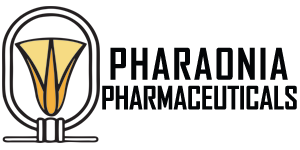

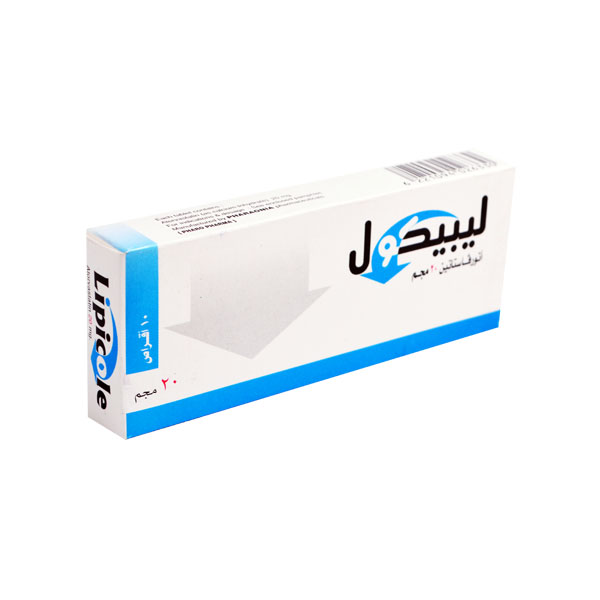
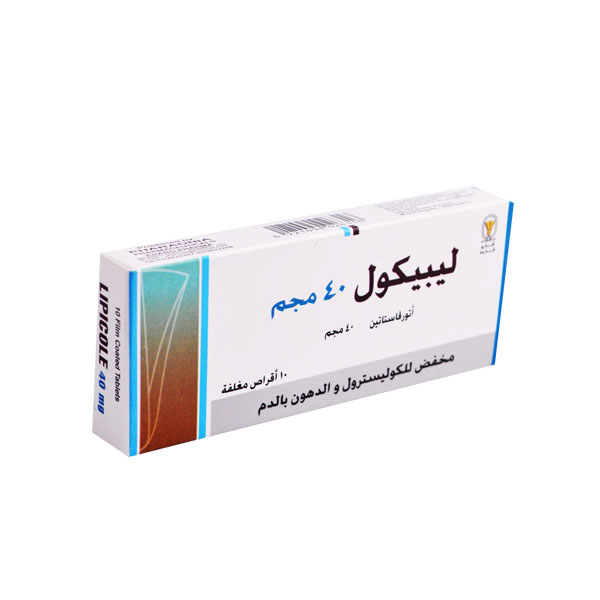
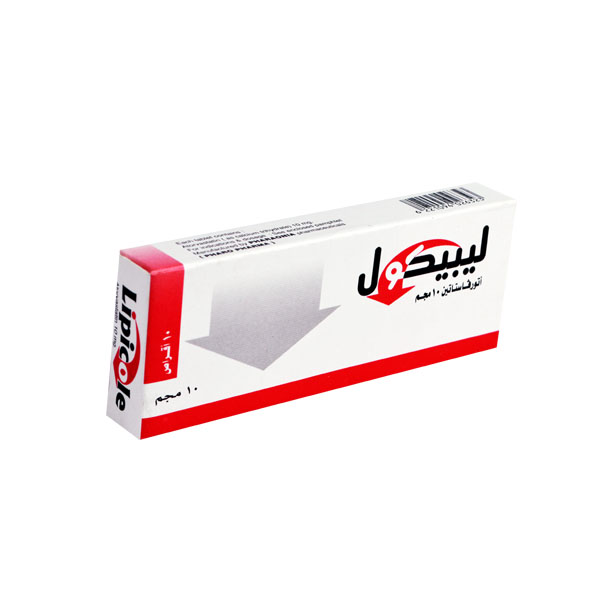


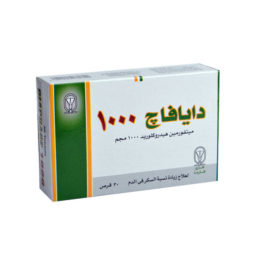
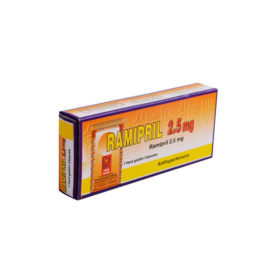
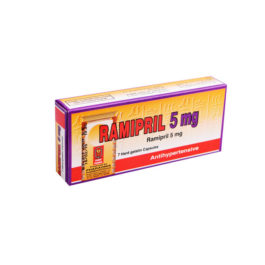


Reviews
There are no reviews yet.